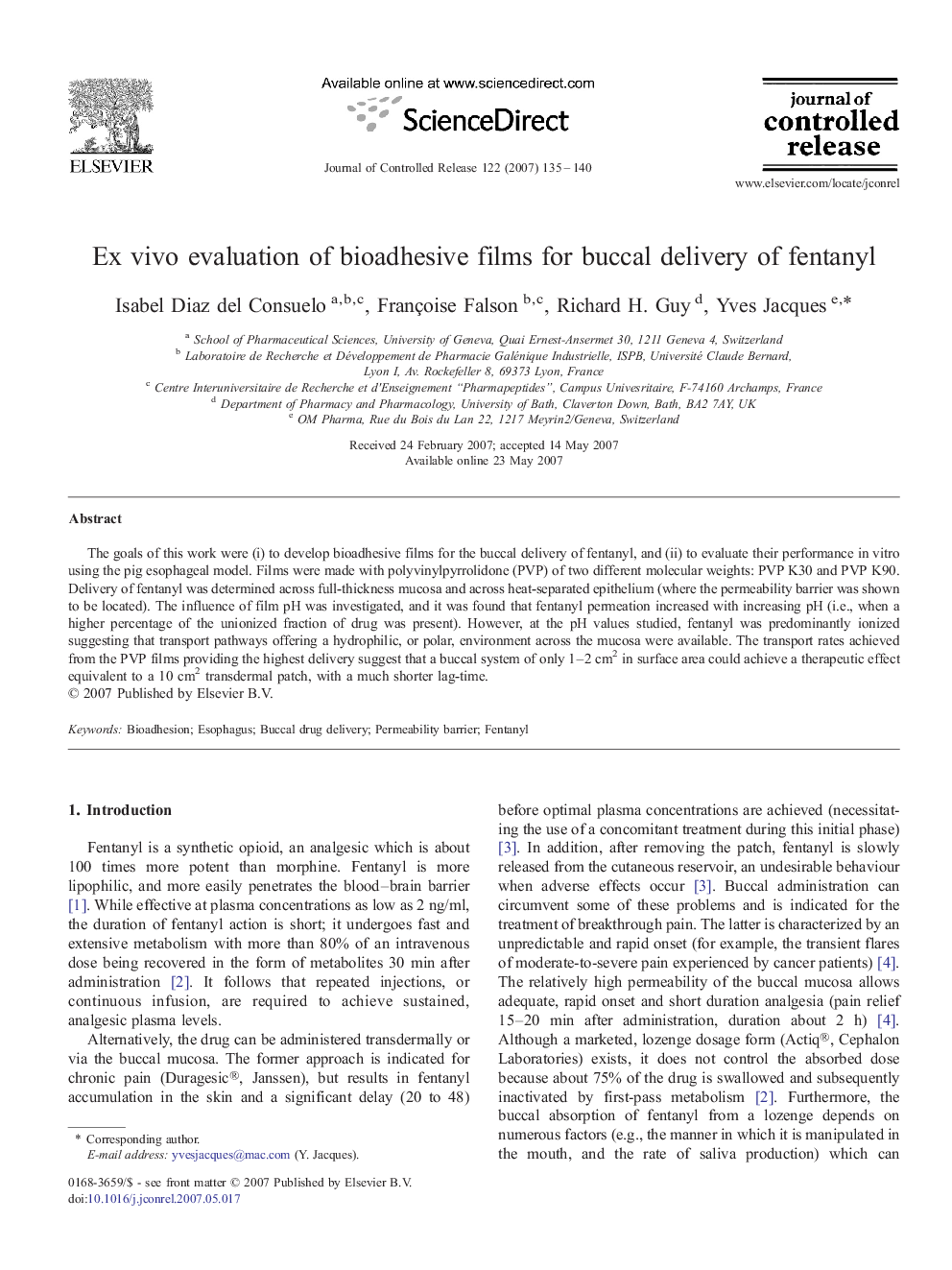| Article ID | Journal | Published Year | Pages | File Type |
|---|---|---|---|---|
| 1427270 | Journal of Controlled Release | 2007 | 6 Pages |
The goals of this work were (i) to develop bioadhesive films for the buccal delivery of fentanyl, and (ii) to evaluate their performance in vitro using the pig esophageal model. Films were made with polyvinylpyrrolidone (PVP) of two different molecular weights: PVP K30 and PVP K90. Delivery of fentanyl was determined across full-thickness mucosa and across heat-separated epithelium (where the permeability barrier was shown to be located). The influence of film pH was investigated, and it was found that fentanyl permeation increased with increasing pH (i.e., when a higher percentage of the unionized fraction of drug was present). However, at the pH values studied, fentanyl was predominantly ionized suggesting that transport pathways offering a hydrophilic, or polar, environment across the mucosa were available. The transport rates achieved from the PVP films providing the highest delivery suggest that a buccal system of only 1–2 cm2 in surface area could achieve a therapeutic effect equivalent to a 10 cm2 transdermal patch, with a much shorter lag-time.
